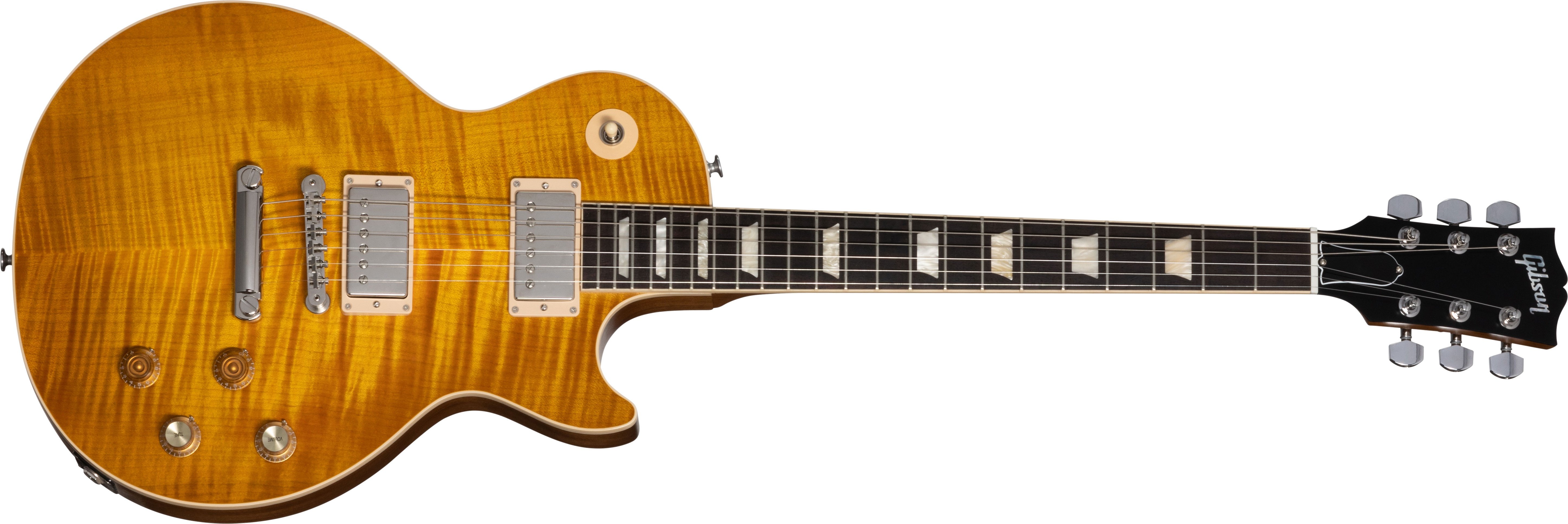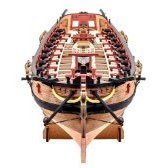-
Posts
5,963 -
Joined
-
Last visited
Content Type
Profiles
Forums
Gallery
Events
Posts posted by James H
-
-
-
Good morning Andy,
My general background has also been plastic, but I've been doing wood ships since 2001 (with a break of a few years in there too), so it's nice to see someone with a similar background join here. St. Gabriel is a beautiful kit and you really did a corking job on her.
Question is....what is next? ❓
Oh, and

-
Just now, EKE said:
Thanks so much Jim! Appreciate the kind words. Now I need to figure out all the rigging bits. Fortunately this model is not too complicated in that regard.When I built it, Zulu was the first ship I'd rigged in over 12yrs. I think it took me about 4 or 5 days.
At my current pace, after Flirt and Duchess, I'd probably do it in 2 or 3hrs!
- EKE, chris watton and Keithbrad80
-
 3
3
-
`I absolutely love this.
That black upper hull, registration number and the overall finish and attention to detail.
Amazing that this is a first build.
- EKE, chris watton and Keithbrad80
-
 3
3
-
40 minutes ago, yvesvidal said:
Hello James,
I (we are all) was wondering if there is any news from Amati and if you have received replacements for the defective materials and parts?
Let us know how it goes.
Thanks
Yves
Hi Yves,
A good number of sheets were actually cut from a timber that was unsuitable for purpose, as the grain was too coarse. Very fine parts were crumbling. There seems to have been some miscommunication at the laser plant, and replacements are hopefully expected in these next months.
Coronavirus has screwed up Amati's release schedule, and Bismarck was due to be released last November, then it had to be moved to Jan/Feb this year. I remember proof reading the two manuals for it and being very tied for time with it. In retrospect, I could've have had more time!
At the moment, I believe Bismarck is their priority and I have to presume production of it has been impacted too, and that will in turn impact Victory.
Damn pandemic! 🤢
- Old Collingwood, ccoyle, FrankWouts and 4 others
-
 5
5
-
 2
2
-
It can also be found here on the new page for the ship's boats:
https://vanguardmodels.co.uk/product/ships-boats-various-types/
- Gregory, Milos-1971, mtaylor and 3 others
-
 6
6
-
-
I'm having déjà vu here as I'm about to finish the first three of NINE different 1:64 boats for Chris.
With this one you're building, I didn't go for clinker planking simply because I only had one set of parts and didn't want to screw it up 😆
-
This has been a triumph. Your attention to detail is superb.
- chris watton, BobG and EKE
-
 3
3
-
-
STAGE 80: COMPONENTS FOR THE FOREARM AND LEFT HAND
Work on the left forearm begins by CA'ing the tendon springs into position on the forearm plate...
...which is then screwed to the forearm shaft and the joint added to the top.
Connectors are supplied to fit the previous finger onto the hand.
Until pack 9, that's it!
- Canute, popeye the sailor, lmagna and 5 others
-
 8
8
-
STAGE 79: PARTS LEFT SECOND (MIDDLE) FINGER AND ARM
Another finger to build and fit to the hand! One tip...I find it's easier to slide the neoprene tube into the joint from behind, and THEN push the main metal pin through it to expand the neoprene whilst in situ. CA is used to glue a plastic cap to the opposite side.
The elbow joint is now completed and fitted to the left upper arm, completing that assembly.
- marktiedens, GrandpaPhil, Egilman and 2 others
-
 5
5
-
-
STAGE 77: BUILD THE FIRST FINGER OF THE LEFT HAND
Not too much to do here. The left arm joint is saved over for a subsequent stage, but another finger is assembled as per the ones for the right hand side hand. These joints pivot nicely and are tight as they may need to hold a plasma rifle when the model is complete.
- GrandpaPhil, mtaylor, Canute and 3 others
-
 6
6
-
STAGE 76: FURTHER COMPONENTS FOR THE LEFT UPPER ARM
Again, another liner is pushed into the socket on this left arm part, and then the shoulder joint is added.
Biceps and triceps now laid in place over the assembly.
Both left upper arm parts re now sandwiched together, and screws used to secure the muscles. I found I needed to use a rubber tip hammer to tap the main arm parts together at the shoulder joint, but they did fit nicely after that.
- Canute, GrandpaPhil, Egilman and 3 others
-
 6
6
-
- marktiedens, mtaylor, Canute and 3 others
-
 6
6
-
- GrandpaPhil, marktiedens, Egilman and 3 others
-
 6
6
-
-
-
PACK 8
STAGE 71: ASSEMBLING FOOT PARTS AND ATTACHING THEM TO THE RIGHT LEG
This pack is a continuation of the right foot, and also sees it complete. It really is very important that the photos are studied and the orientation and numbers of the parts. There are 2 rods per toe and some of these have a slight kink in them to accommodate the lie of the toes as they sit on the foot. These are assembled as before, and also using some thread lock on the grub screws. Care is also needed in orientation in fixing these to the feet too.
- Canute, marktiedens, GrandpaPhil and 3 others
-
 6
6
-
17 hours ago, VTHokiEE said:
Is there any long term issues with this method? The results are awesome - is there a link to how/why this works?
Nope, none whatsoever!
Just add some to a small brush and brush the area you want to add PE to. Properly wet the area, then add the PE. Use a dry brush to wick away any excess and leave to dry. Seal with another brushing of Klear/future.
-
1 hour ago, Rustyj said:
😂. Thanks Jim. One question. When you attached the PE details to the out side of the hull what did you use? It's so clean and no glue marks.
Thanks Glenn, Yes I used Tamiya tape and then regular painters tape over that.
Thanks for all the likes too!
I used Johnsons Klear (Future) floor polish.
Just brush some in there and plop the PE into position. Wick away any excess and leave to dry for 30 mins. I then brushed some extra over the top. No glue and it's settled solidly into place with no glue marks.
As for using Tamiya tape....don't waste your money. Buy Tesa Tape. Same stuff and a fraction of the price for the quantity.
https://uk.rs-online.com/web/p/masking-tapes/9139532/
Same grade. Same tack. Exactly the same, I promise.
-
I'm having Déjà vu !!!
Looking real good and that white area looks flawless.
- FrankWouts and BobG
-
 2
2
-
Wishing you all the best for 2021 too, and for everyone here. Let's hope that in the real world, it's a darn sight better than 2020! 😆
- Charlie1805, Canute, bruce d and 5 others
-
 8
8













































Duchess of Kingston 1778 by Rustyj - FINISHED - Vanguard Models - 1:64 - Royal Yacht
in - Kit build logs for subjects built from 1751 - 1800
Posted
That looks so very pretty 😊